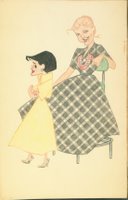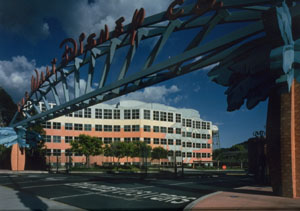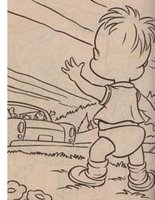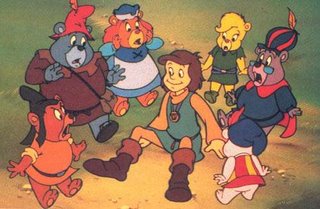On February 3, TAG will host its Afternoon of Remembrance for animation veterans who passed during '06. We've been doing this at the Lasky barn in Hollywood for a decade now, and every year I'm moved (as well as educated) at the wide swath of talent who've worked in our business.
Because many of these folks are unknown to the wider, outside world, I'll devote a little time and space here over the next few days, remembering some of the artists who've played a part in entertaining planet earth over the last fifty or seventy years...
Ed Benedict: Ed was memorialized on various animation websites before and after he died on August 28 at age ninety-four. Ed started at Disney in 1930 and went on to a long animation career at a number of studios including Walter Lantz, Charles Mintz, and Hanna-Barbera. If you were an elementary school kid in the late fifties, early sixties and you watched one of Hanna-Barbera's productions (and what elementary school kid didn't?), you were probably looking at Ed's designs, because he was instrumental in creating the looks of most of H-B's early characters.
Nicolette Bonnell: Nicolette, who worked as a cel painter, Xerox checker and animation checker at H-B, Bakshi and Disney for thirty-six years, passed away on November 1.
Walerian Borowczyk: Walerian was an internationally known surrealist filmmaker trained as a painter and graphic artist at the Academy of Fine Arts in Cracow, Poland. He served as an illustrator of film posters, and also worked extensively in live-action and animation. His animated works include Dom House (1958), Les Astronautes (1959) and the feature Mr. and Mrs. Kabal's Theater (1967). In the '50s and '60s, Borowczyk was considered one of the most eminent animators in the world. His techniques included manipulating cutout geometric shapes and painting directly onto lengths of film. He died February 3 in Paris at the age of 82. (from Animation World Network).
Harvey Bullock: Harvey was a prolific comedy writer who wrote on The Flintstones, The Jestsons, Top Cat, Welcome To It and Wait 'Til Your Father Gets Home. A veteran of World War II, Harvey began his writing career on The Real McCoys moving on to The Andy Griffith Show in the early sixties. Harvey passed away on April 23 in Laguna Beach, California. He was 84.
Marline Burkhart: Marlene worked as a Xerox processor and Xerox checker for 23 years at Disney, Grantray-Lawrence and Hanna-Barbera. She died on September 1, age 76.
Kimie Calvert: Kimie died December 23, 2005. An assistant animator, she worked for both commercial studios and major film companies, including Disney, Filmfair, Hanna-Barbera, Fred Calvert, Rich Animation, Warner Bros. and Baer Animation among many others.
Brad Case: Veteran animator and director Brad Case died March 19 at the age of 91. In a career that began in 1934 and ended with his retirement in 1999, Mr. Case worked for Iwerks, Disney, MGM, Walter Lantz, Hanna-Barbera, UPA DePatie-Freleng and Marvel Productions among others.
Elizabeth Case Zwicker: Elizabeth was one of the pioneers in the Disney Animation Department, and by pioneer we mean one of the first female artists (outside of Mary Blair) who wasn't in the ink-and-paint department. Elizabeth worked on Sleeping Beauty on the forest birds and the court jester. On the day Beauty finished, Elizabeth was laid off. "I was crushed. I couldn't imagine life without animation. I didn't want any other work there, even for more money..." Becoming a poet and a painter, Zwicker illustraed children's books and pointed murals. She died in April at the age of seventy-six. (Elizabeth is the one in the plaid dress -- artwork by J. Sparey...)

Suzi Dalton: From 1934 until retirement in 1973, Ms. Dalton worked as an inker, drybrush artist and finacl checker and Mintz, Warners, Iwerks, MRM, Lantz, Snowball and Hanna-Barbera (among many others.) She died April 10 at the age of ninety-five.
Barbara Dayyan: Barbara worked as a cel painter from 1960 until retirement in 1977. Some of the companies she worked for included Trans-Artists, Snowball, Crston, Disney, Hanna-Barbera, Filmation and Disney. She was 93 when she passed away on May 13th.















































